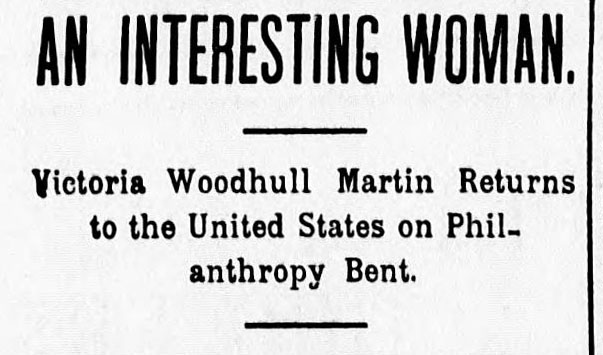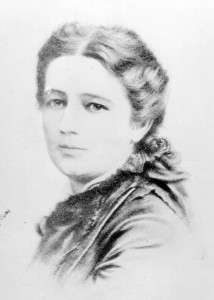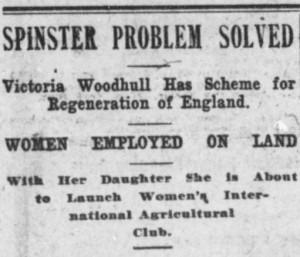“Vivacious Vic”

In 1872, Ohio-born Victoria Woodhullbecame the first femaleto run for president of the United States. Asthe Equal Rights Party candidate, shesupportedwomen’s rights, suffrage and labor reform, and Frederick Douglass was selected as her running mate, although he never acknowledged this nomination. Woodhull ultimately did not win the election (losing to another Ohioan, Ulysses S. Grant), but her place as one of the most controversial women of her time makes her an important and fascinating figure in U.S. history.
Woodhull was born Victoria California Claflin in 1838, in the small rural town of Homer in Licking County. In 1853, she married Canning Woodhull in Cleveland, Ohio. The marriage produced two children, Byron and Zulu (Zula) Maude, but was unhappy. Woodhull’s husband was an alcoholic and unfaithful, and their marriage ended in divorce in 1864.

This relationship likely influenced Woodhull’s support of “free love,” the idea that women should have the right to marry, divorce and bear children without government interference. She was outspoken about society’s double standard: while women who sought divorces were vilified, sexually immoral men were generally accepted. Her speeches and lectures on this topic were met with strong criticism. After she gave one at a women’s suffrage convention in San Francisco, theArizona Sentinel said her name was “a stench in the nostrils of all virtuous women and pure men.”
Until the late 1860s, Woodhull’s primary profession was as amagnetic healer and spiritualist. She moved to New York City in 1868 with her second husband, Colonel James Harvey Blood, along with her children and sister, Tennessee Claflin. She and Tennessee soon became the first female brokers on Wall Street, operating Woodhull, Claflin & Company with the assistance of Cornelius Vanderbilt. Their success led to the monikers “the Queens of Finance” and “the Bewitching Brokers.”
By 1869, Woodhullhad begun to work with suffragists and even testified to a congressional committee in 1871(another first for women), arguing thatunder the 14th and 15th Amendments, women had already won the right to vote. Although Congress did not agree with her ideas, this moment was pivotal in increasing her profile and establishing her as a leader in the suffragist movement.
Money earned from the brokerage firm was used to startWoodhull & Claflin’s Weekly in 1870 — one of the first papers founded by women in the U.S. Like its publishers, its content was controversial and addressed many taboo topics ranging from free love to suffrage to vegetarianism. Their paper also printed the first English version of Karl Marx’sCommunist Manifestoin 1871. Its mainpurpose, however, was to advocate on behalf of Woodhull’s future run for president.
Her 1872 bid for presidency was supported by a number of groupsseeking social and labor reforms, butshe won very few, if any, votes (hers weren’t counted, and she wasn’t on the ballot in all states). Woodhull herself did not even vote: she, along with her husband and sister, were in jail during the election for distributing “obscene content” in their newspaper, after publishing a story about Reverend Henry Ward Beecher’s adultery with a parishioner.

Woodhulldivorced Colonel Blood in 1876 and moved to England in 1877. There, she met her third husband, a wealthy banker named John Biddulph Martin. Her political career slowed down (though she still attempted to gain the U.S. presidential nomination again in 1884 and 1892), but she continued to lecture on topics of social reform.She and her daughter Zula also published a magazine called The Humanitarian from 1892 to 1901, when Woodhull’s husband’s died.She remained active in suffrage and philanthropic activities,living inthe English countryside until her death in 1927.
To learn more about Victoria Woodhull’s accomplishments and scandals, as well as what her contemporaries thought of her, explore historic newspapers on Chronicling America and Ohio Memory!
Thanks to Jenni Salamon, Coordinator for the Ohio Digital Newspaper Program, for this week’s post!



Leave a Reply
You must be logged in to post a comment.